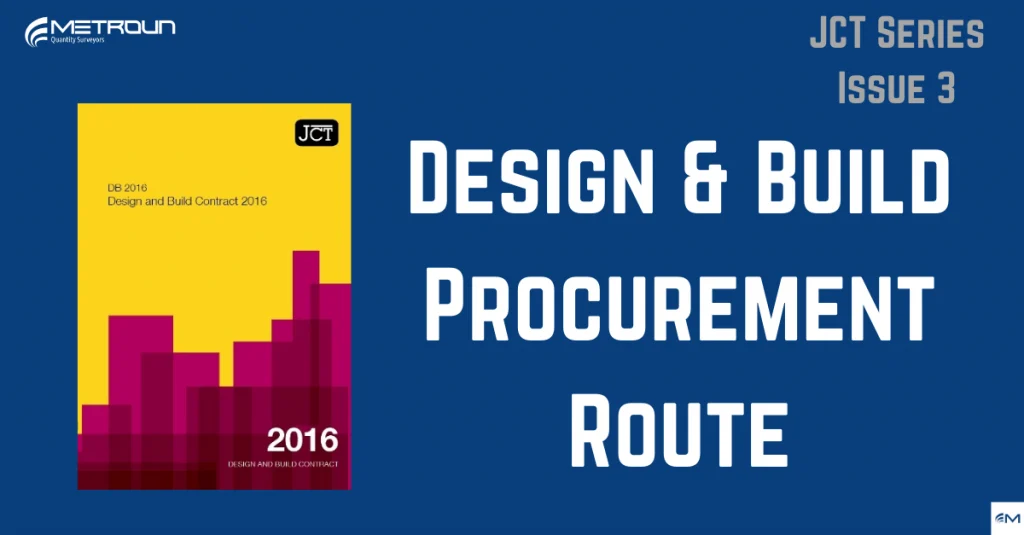There are 3 procurement routes that can be taken under the JCT contracts. Traditional, Design & Build & Management.
In this article, we will describe the design and build procurement route & all the pros and cons that go along with it.

We can start this post with a simple definition of what Design & Build is; Design & Build is a term describing a procurement route in which the main contractor is appointed to design and construct the works.
In this setup, the contractor is responsible for the design, planning, control, organisation and construction of the project to the employers’ requirements.
This means the contractor will provide all the relevant design documents such as the design drawings, preliminary cost estimates and specifications as well as constructing the project.
As it’s seen a single point of responsibility, some clients prefer to use this method only for simpler projects, where design quality is not the main consideration.
Design and build contracts are usually awarded under the following situations;
- “Where there is a need to make an early start on site as there can be an overlap of design and construction
- Where the client wishes to minimise their risk. This can be achieved by having no responsibility for design
- For technically complex projects which can benefit from the contractor’s expertise
- Where the employer does not want to retain full control over the design development” (designingbuilding, 2020)
The predominant payment method for design and build contracts are awarded under a lump sum JCT contract as it reduces the risk and management on the client.
The Design and Build procurement route has a lot of advantages & disadvantages.
The main advantage of the design and build route is that clients have a single point of responsibility for the design and construction of the project. This can result in an earlier start on site, earlier price certainty and a reduction in responsibility and management of the client.
Some people, however, are not major fans of this route. Those who dislike the system point out that if a contractor or builder is given a free hand to design a building based on a pre-agreed price, even if costs don’t rise during the project they will be likely to work to the lowest possible specifications. Clients also have to commit to a concept design early and if there any changes to the design at a later stage the contractor will most likely request an expensive cost variation.
Watch our video on JCT Design & Build Procurement here:
How we can help
Here at Metroun we can offer you commercial support when working on a construction project. We can tailor the support to suit your needs. Want to be commercial independent? We can provide industry ready templates. Require a full-time QS? We can provide you with highly skilled Quantity Surveyors to manage the commercial aspect on your projects. Need some extra support? We can provide you with guidance and support as and when you need.






